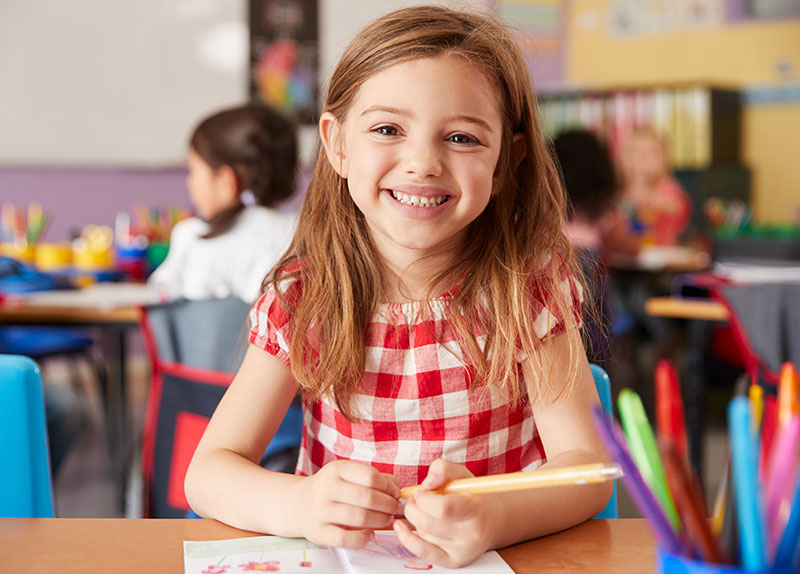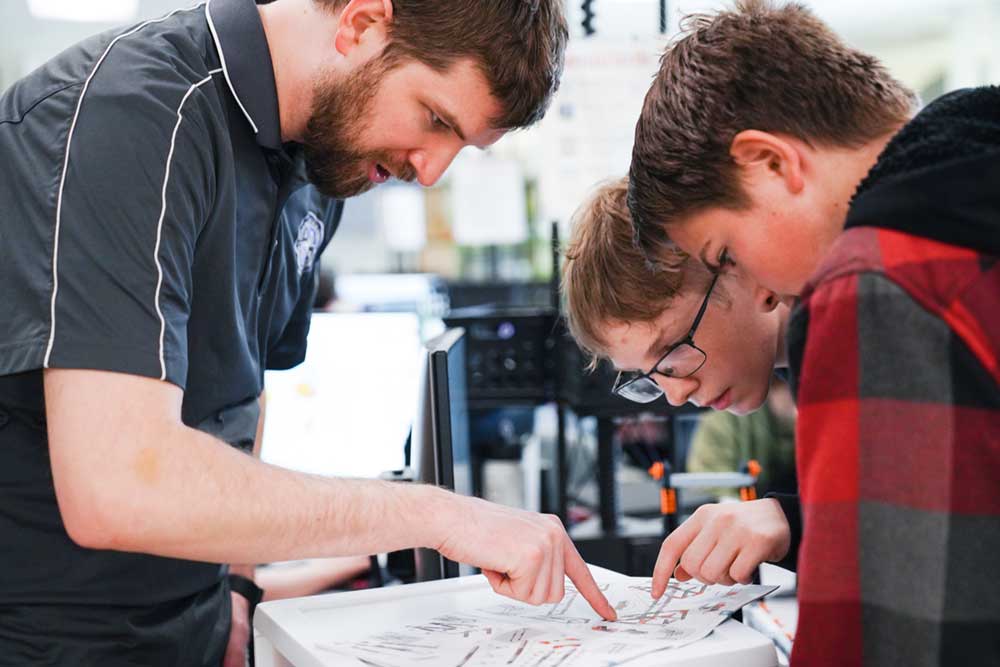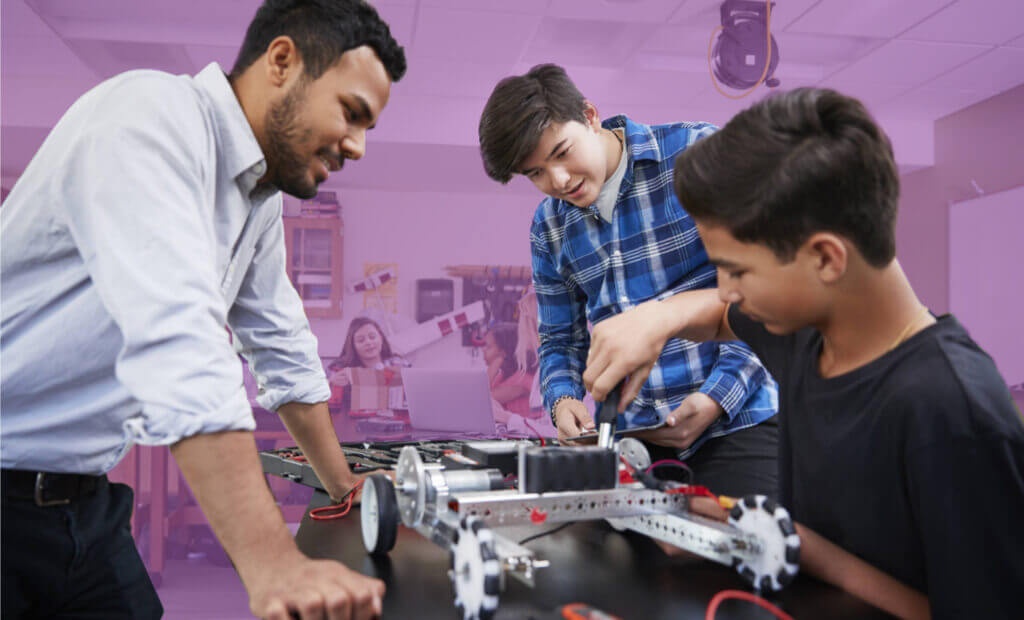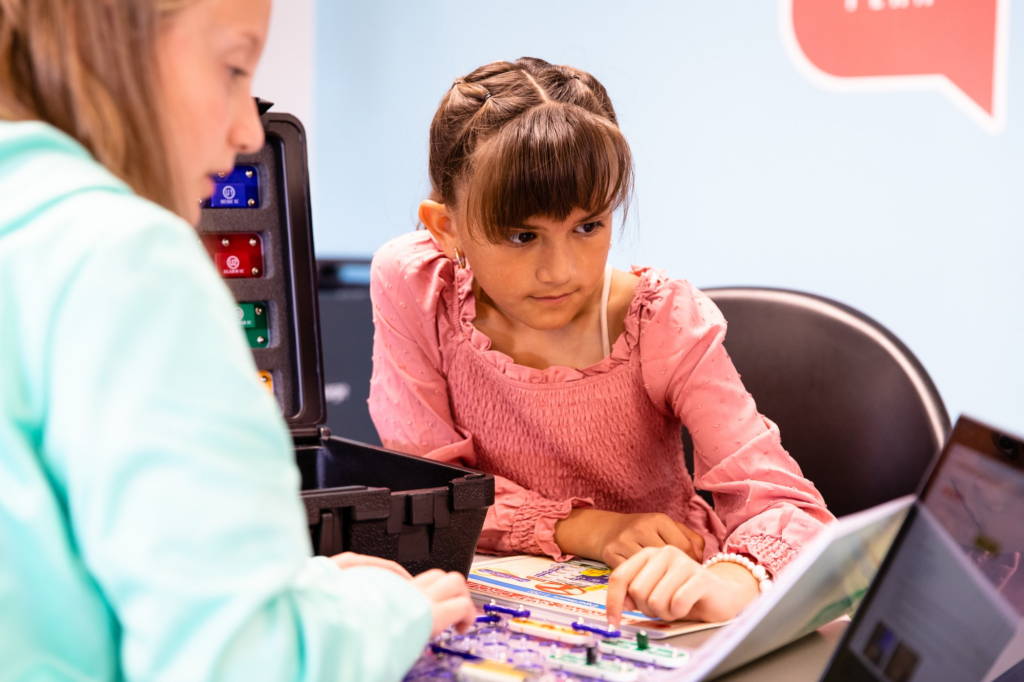The Great Waste Challenge: Another ThinkerSpace Challenge to Inspire Your Students
If you’ve been following our Facebook page, you’re familiar with our ThinkerSpace Challenges. These challenges are designed to engage students and your own children in project-based learning. As I write these challenges, my goal is to make sure kids can complete the challenge by using materials they can find around the house.
In this week’s challenge, we increase student engagement through gamification and creating a community of “players.”
Gamification
For those of you new to this concept, gamification brings elements of gaming to the learning experience. Gamification can include awarding points and badges, competition among participants, rules, and progress toward a goal or defined “finish” line.
According to Dr. Alfred Boyd, Jr., gamification increases student engagement and motivation while shifting the perception of failure1. In a video game, students respond to losing by picking the game up and trying again. Let’s harvest this perseverance in gaming and apply it to the learning process.
The Great Waste Challenge
As we discussed in last week’s ThinkerSpace Challenge, embedding learning objectives in real-world applications increases student engagement and the personal value of the experience.
In 2017, over 250 million tons of waste was generated in the United States, over 50% of which ended up in landfills2. This vast amount of waste is an issue that all Americans can help address—even our youngest residents.
This week’s challenge will ask students to do their part in reducing waste.

Reduce, Reuse, Recycle: Minimize Your Household Waste
You will compete with your classmates or friends and family to reduce your household waste. How much can you save?

Some of the most effective ways to minimize waste is to reduce, reuse, recycle, and compost.
Reduce: Minimize the amount of waste you create.
Reuse: Before throwing away an item, think about how you might be able to use or modify the item for a different purpose.
Recycle: Collect then recycle certain types of paper, plastic, glass, and metal items. If your neighborhood or apartment complex doesn’t recycle, find a local recycling center. To learn about what can be recycled, visit the United States Environmental Protection Agency’s website.
Compost: Composting food waste is one way to recycle organic materials. You can create a small or large composting system right where you live or in a community space. For more information about composting, check out this website.

As you start planning how to reduce your household waste, consider these questions:
- Analyze your waste.
- What percentage of your trash could be recycled?
- What percentage of your trash could be reused?
- What percentage of your trash could be composted?
- What changes will make the biggest impact on the amount of trash you and your family generate?
- What can you do to reduce wasted or expired food?
- How can you get your family and community involved in this effort?

Let’s get started with your challenge!
- Collect data about your waste.
- If you have a scale, weigh the amount of trash produced daily. If you don’t have a scale, measure your trash by capacity, or how full the trash can is.
- Determine the main sources of your waste and identify a few ways to reduce, reuse, or recycle those materials.
- Implement those strategies and continue to measure the amount of trash produced daily.
- As you compete with your peers, friends, family members, or yourself to minimize your trash, make observations about it. What are new ways you can reduce the amount you’re generating?

Discuss the three waste management strategies: reduce, reuse, recycle. Consider showing students an age-appropriate video about this topic, like this one from SciShow Kids. Focus your challenge on reusing materials that are being thrown away or recycled. Ask your students to find something in their trash that can be reused. Challenge them to find a new, innovative purpose for this material. Give them a few ideas to get started: turn a plastic milk container into a pencil holder, combine several cans to create a rolling pin, or transform a takeout box into a piggy bank. Present their creations and have students give customized awards for each creation.
Supporting ThinkerSpace Challenges
To gamify this challenge, consider creating badges for different achievements, like when students begin composting, reuse a material, increase the percentage of waste that is recycled, etc. This gives all students an equal opportunity to earn badges.
When I was younger, and even now to be honest, I loved working toward a goal. I was a champion of my local library’s summer reading challenge. However, in competitions where only one winner was named, I was generally less motivated. As I fell farther and farther behind, it became harder to want to compete.
You know your students and your own children the best. If a winner-take-all competition is something that could impact your students’ motivation, eliminate it. Instead, set up different levels of achievement. Give students plenty of time to progress through the levels at their own pace.
Opportunities for Skill Application
One of the best parts of these challenges is that they encourage and inspire students to apply valuable math and literacy skills. As your students research waste management and implement new practices, think about how you can reinforce the following skills:
- Synthesize non-fiction texts
- Measure waste in customary and metric units
- Collect data and display it with tables and graphs
- Create scale drawings for “reuse” prototypes
- Present results
- Add, subtract, multiply, and divide while analyzing collected data
Whether it’s with this ThinkerSpace Challenge or another project you’ve planned, incorporate elements of gaming to increase your students’ motivation. Take it to the next level by providing a real-world application of the targeted skills or knowledge.





